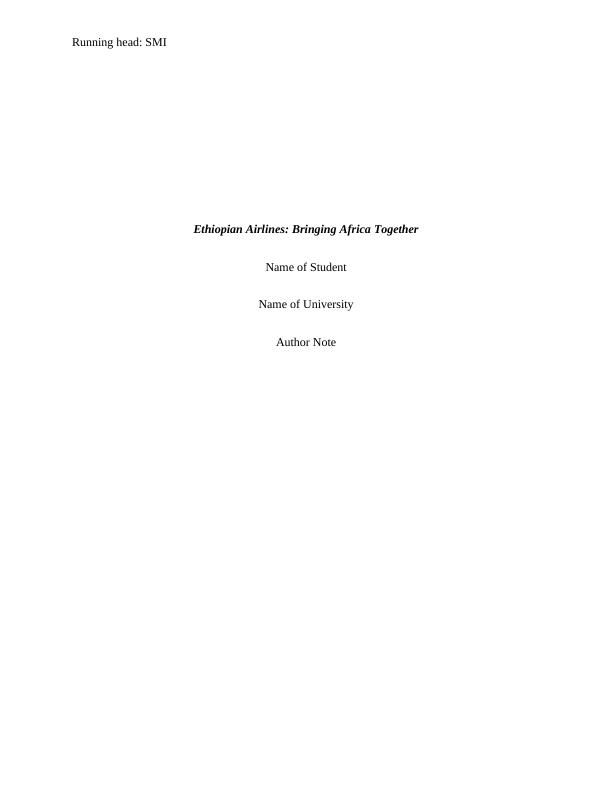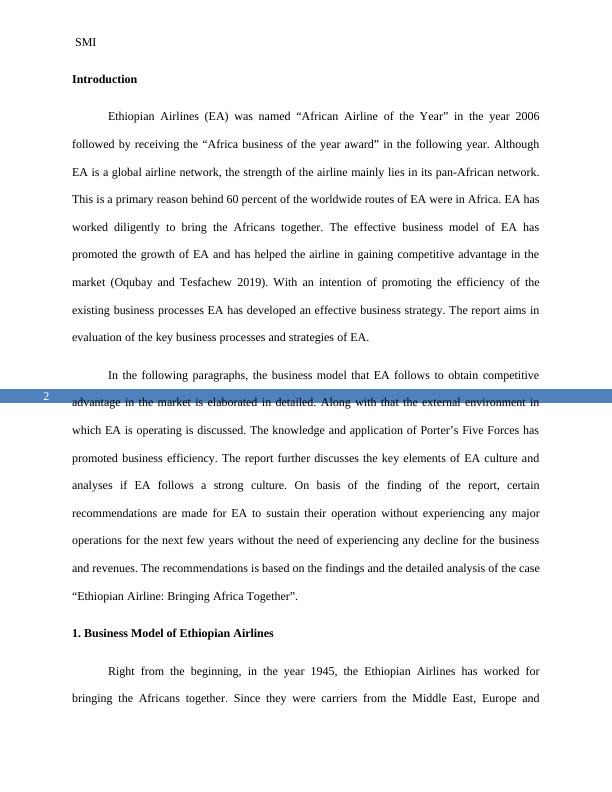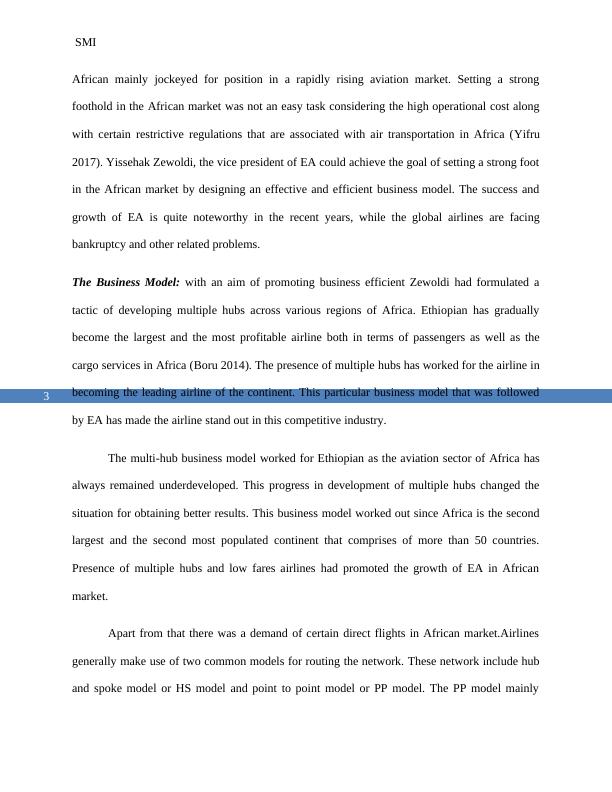Ethiopian Airlines: Bringing Africa Together
In 2006, Ethiopian Airlines was named “African Airline of the Year.” 1 A year later, the company gained further acclaim when it received the “Africa Business of the Year” award. 2 These achievements signalled that the company was on course for achieving the strategic plan it had formulated in 2005, which sought, among other things, to increase the company’s annual passenger traffic to three million and to triple its annual revenue
Added on 2022-08-10
About This Document
CASE STUDY - ETHIOPIAN AIRLINES: BRINGING AFRICA TOGETHER Description of the Task Read the case study affixed in the email thoroughly. Explain your answers comprehensively for the essay questions listed below based on the case. Provide introduction, body, conclusion and referencing format. The concepts from the slides can be a guide (as it is too short) but not the absolute answer. Question 1: Describe in detail the business model that made Ethiopian Airlines stand out in this competitive (cut throat) industry. Question 2: Explain the External Environment that Ethiopian Airlines was operating under. Question 3: How can knowledge of Porter’s Five Forces model help a company? Explain your answer with reference to the case material. Question 4: What are the key elements of Ethiopian Airlines culture? Is Ethiopian Airlines a strong culture company? Question 5: Give some recommendations that would have made Ethiopian Airlines sustain its operations for the next few years
Ethiopian Airlines: Bringing Africa Together
In 2006, Ethiopian Airlines was named “African Airline of the Year.” 1 A year later, the company gained further acclaim when it received the “Africa Business of the Year” award. 2 These achievements signalled that the company was on course for achieving the strategic plan it had formulated in 2005, which sought, among other things, to increase the company’s annual passenger traffic to three million and to triple its annual revenue
Added on 2022-08-10
End of preview
Want to access all the pages? Upload your documents or become a member.




